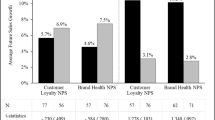Abstract
A surprisingly large number of houses sell above listing prices in a wide range of markets and in all market conditions. The question is: why do some houses sell above listing price while neighboring similar houses do not? Is it that sellers misprice the property at the outset, work with real estate brokers who are particularly skilled at bringing in high value buyers, or are simply lucky to have high value buyers show up during the marketing period? This paper makes two contributions. It offers an empirical framework to isolate seller and agent influences on the likelihood of selling above listing price. It also offers empirical evidence about the seller, agent and market determinants of sales above list across all market phases. Sellers who do not follow their agent’s guidance and under-price their property increase the likelihood of selling above list. Agent experience also increases the likelihood. We also identify specific marketing strategies and agent incentives that do and do not appear influence the likelihood of selling above listing price once the other seller behavior, agent characteristics, and market conditions are taken into account.

Similar content being viewed by others
Notes
Following convention, we use the terms broker and agent interchangeably since the differences in their qualifications and legal duties are not relevant to the questions addressed here. The National Association of Realtors estimates that over 90% of sellers use real estate agents (NAR 2017).
Following other housing market studies using MLS data, we omit properties with selling prices in the lower and upper 5 percentiles. We also omit properties with living areas in the lower and upper 5 percentiles and with less than 1 or greater than 5 bedrooms. In addition, we delete new construction since developers typically do not discount prices but instead add upgrades in this market segment.
For agents selling their own properties, DOPSeller captures any difference in listing price strategies they adopt relative to client sellers that are not correlated with the set of agent characteristics used to remove agent influences on DOPSeller in the second stage estimation.
The results are the same for alternative definitions of sales price when determining sales above listing price: transaction price, transaction price less stated seller concessions, and transaction price less hypothetical seller concessions of 3%.
We also estimate these models on reduced sample that excludes all agent-owned properties. Removal of the filters or the inclusion does not change our findings. These results are available upon request.
The correlation between DOPAgent and the vector of agent characteristics makes it inappropriate to include both as separate variables in the probit model.
Spatial fixed effects provide a nonparametric approach to spatial dependence when estimated with clustered errors. In particular, we rely on error-clustering at the census tract level following, among others, Davis (2004). This approach essentially uses a simplified version of the spatial weighting matrix where we allow for spatial dependence at the scale of the fixed effects. Similarly, we allow error terms to be correlated for observations within tracts, but assume zero correlation of the error terms for observations in different tracts. This clustering also implicitly adjusts the standard error estimates for heteroscedasticity. The conclusions are unchanged when estimating with clustered errors, which suggests that spatial interdependence or endogeneity arising from either seller or agent behavior is not driving the results reported below.
Note that the analysis focuses on the probability of selling above listing price, not whether the ultimate selling price is higher or lower than houses selling below listing price. Nonetheless, a simple hedonic price regression for sold properties shows that houses sold above listing price sell at a 1.6% premium on average in this market. This result is, however, at best suggestive as the standard hedonic approach does not control for possible endogeneity in the sold-above-list dummy variable that is the focus of this study.
Because our data does not include information about unsuccessful buyer offers we cannot determine the extent to which agents’ strategies, including setting listing price, lead to the type of buyer bidding wars discussed by Han and Strange (2016).
Estimating the probit models with errors clustered on MLS areas yields the same conclusions as discussed in the text. These results are available upon request.
References
Anderson, R. I., Brastow, R. T., Turnbull, G. K., & Waller, B. D. (2014). Seller over-pricing and listing contract length: The effects of endogenous listing contracts on housing markets. Journal of Real Estate Finance and Economics, 49(3), 434–450.
Anglin, P. M., Rutherford, R., & Springer, T. M. (2003). The trade-off between the selling price of residential properties and time-on-the-market: The impact of price setting. Journal of Real Estate Finance and Economics, 26(1), 95–111.
Arnold, M. A. (1999). Search, bargaining and optimal asking prices. Real Estate Economics, 27(3), 453–481.
Barwick, P. J., Pathak, P. A., & Wong, M. (2017). Conflicts of interest and steering in residential brokerage. American Economic Journal: Applied Economics, 9(3), 191–222.
Benjamin, J., & Chinloy, P. (2000). Pricing, exposure and residential listing strategies. Journal of Real Estate Research, 20(1), 61–74.
Carrillo, P. E. (2012). An empirical stationary equilibrium search model of the housing market. International Economic Review, 53(1), 203–234.
Clauretie, T. M., & Daneshvary, N. (2008). Principal-agent conflict and broker effort near listing contract expiration: The case of residential properties. Journal of Real Estate Finance and Economics, 37(2), 147–161.
Davis, L. W. (2004). The effect of health risk on housing values: Evidence from a Cancer cluster. American Economic Review, 94(5), 1693–1704.
De Wit, E. R., & Van der Klaauw, B. (2013). Asymmetric information and list-price reductions in the housing market. Regional Science and Urban Economics, 43(3), 507–520.
Geltner, D., Kluger, B. D., & Miller, N. G. (1991). Optimal price and selling effort from the perspectives of the broker and the seller. Real Estate Economics, 19(1), 1–24.
Glower, M., Haurin, D., & Hendershott, P. (1998). Selling time and selling price: The influence of seller motivation. Real Estate Economics, 26(4), 719–740.
Goodwin, K., Waller, B., & Weeks, H. S. (2014). The impact of broker vernacular in residential real estate. Journal of Housing Research, 23(2), 143–161.
Guren, A. M. (2018). House price momentum and strategic complementarity. Journal of Political Economy, 126(3), 1172–1218.
Han, L., & Strange, W. C. (2016). What is the role of the asking price for a house? Journal of Urban Economics, 93(1), 115–130.
Haurin, D. (1988). The duration of marketing time of residential housing. Real Estate Economics, 16(4), 396–410.
Haurin, D. R., Haurin, J. L., Nadauld, T., & Sanders, A. (2010). List prices, sale prices and marketing time: an application to us housing markets. Real Estate Economics, 38(4), 659–685.
Hayunga, D. K., & Pace, R. K. (2016). List prices in the US housing market. Journal of Real Estate Finance and Economics, 55(2), 155–184.
Horowitz, J. L. (1992). The role of the list price in housing markets: theory and an econometric model. Journal of Applied Econometrics, 7(2), 115–129.
Kang, H. B., & Gardner, M. J. (1989). Selling price and marketing time in the residential real estate market. Journal of Real Estate Research, 4(1), 21–35.
Knight, J. R. (2002). Listing price, time on market, and ultimate selling price: Causes and effects of listing price changes. Real Estate Economics, 30(2), 213–237.
Knight, J. R., Sirmans, C. F., & Turnbull, G. K. (1994). Listing price signaling and buyer behavior in the housing market. Journal of Real Estate Finance and Economics, 9(3), 177–192.
Knight, J.R., Sirmans, C.F., and Turnbull, G. (1998). List Price Information in Residential Appraisal and Underwriting. Journal of Real Estate Research, 15(1): 55–70.
Levitt, S. D., & Syverson, C. (2008). Market distortions when agents are better informed: The value of information in real estate transactions. Review of Economics and Statistics, 90(4), 599–611.
Luchtenberg, K. F., Seiler, M. J., & Sun, H. (2018). Listing agent signals: Does a picture paint a thousand words? Journal of Real Estate Finance and Economics. https://doi.org/10.1007/s11146-018-9674-z.
Merlo, A., & Ortalo-Magne, F. (2004). Bargaining over residential real estate: evidence from England. Journal of Urban Economics, 56(2), 192–216.
National Association of Realtors. (2017). 2017 Profile of home buyers and sellers, https://www.nar.realtor/sites/default/files/documents/2017-profile-of-home-buyers-and-sellers-downloaded. Accessed 28 Sept 2018.
Rutherford, R. C., Springer, T. M., & Yavas, A. (2005). Conflicts between principals and agents: Evidence from residential brokerage. Journal of Financial Economics, 76(3), 627–665.
Smith, P. S., Gibler, M. K., & Zahirovic-Herbert, V. (2016). The effect of relisting on house selling price. Journal of Real Estate Finance and Economics, 52(1), 176–195.
Turnbull, G. K., & Dombrow, J. (2007). Individual agents, firms, and the real estate brokerage process. Journal of Real Estate Finance and Economics, 35(1), 57–76.
Turnbull, G. K., & Zahirovic-Herbert, V. (2011). Why do vacant houses sell for less: Holding costs, bargaining power or stigma? Real Estate Economics, 39(1), 19–43.
Turnbull, G. K., & Zahirovic-Herbert, V. (2012). The transitory and legacy effects of the rental externality on house price and liquidity. Journal of Real Estate Finance and Economics, 44(3), 275–297.
Turnbull, G. K., Zahirovic-Herbert, V., & Zheng, M. (2018). Uncertain school quality and house price: Theory and empirical evidence. Journal of Real Estate Finance and Economics, 57(2), 167–191.
Yavas, A., & Yang, S. (1995). The strategic role of listing price in marketing real estate: theory and evidence. Real Estate Economics, 23(3), 347–368.
Zabel, J. (2015). The hedonic model and the housing cycle. Regional Science and Urban Economics, 54(1), 74–86.
Author information
Authors and Affiliations
Corresponding author
Additional information
Publisher’s Note
Springer Nature remains neutral with regard to jurisdictional claims in published maps and institutional affiliations.
Appendix
Appendix
Rights and permissions
About this article
Cite this article
Zahirovic-Herbert, V., Waller, B.D. & Turnbull, G.K. Properties that Sell at or above Listing Price: Strategic Pricing, Better Broker or Just Dumb Luck?. J Real Estate Finan Econ 60, 53–76 (2020). https://doi.org/10.1007/s11146-019-09714-y
Published:
Issue Date:
DOI: https://doi.org/10.1007/s11146-019-09714-y




